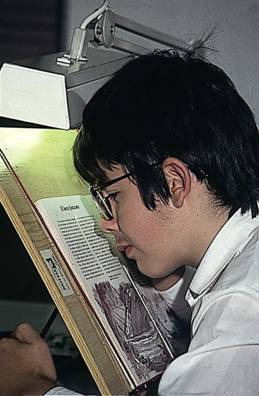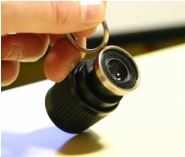Hereditary retinal dystrophies
1. Types of magnifying visual aids
Generally, a person with low vision cannot see objects in real size but can see them if the perception of their size is increased. Optical aids for low vision are based on the amplification of the image that is formed on the retina. This amplification can be achieved through 4 forms of magnification:
1. Relative size enlargements: enlarged photocopies (macrotypes)
2. Magnification by decreasing relative distance: by reducing the distance between the object and the eye, the image of the object on the retina is larger. If a child is not able to see a text at a 40 cm distance, we bring it closer to 10 cm and we are thus increasing the characters’ size by about 4 times. Since reading at 10 cm is uncomfortable, we prescribe special glasses to see at such a short distance, which help focus through converging lenses (positive), which do not increase the size of the object but do allow us to see it in focus.

3. Angular magnification: used when the object is too far away and cannot be zoomed in or resized (a mountain, a building). It is used to see from afar and is achieved through telescopes. Telescopes consist of several attached lenses, which may or may not be goggle-assembled. It is the only useful aid for distant vision. The drawback is that it reduces the visual field. In order to use it, it is necessary to learn to locate the element to be seen and focus on it, but it is difficult to look through them, since a minimum movement of the hand has an exaggerated effect on the object observed.

4. Projection magnification: an object is enlarged by projecting it onto a screen by means of slides and a television magnifying glass. The television magnifier is actually an electronic aid with which you can get magnifications of almost 100 times. It consists of a camera and an optical system that carries the enlarged image to the monitor. It allows to achieve a lot of magnification, good contrast, and a larger visual field. It can even be attached to other cameras, for instance to one that focuses on the whiteboard and to another one on the notebook. It can be used to read any type of document and for writing, drawing, sewing, etc. The drawbacks are the size, since it is not portable, the high cost and the maintenance, which needs to be performed by a professional.